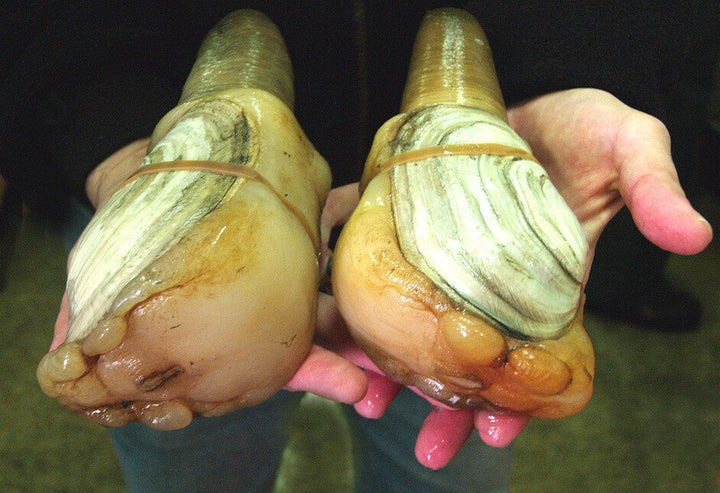
The geoduck clam may be among the weirdest organisms people eat. The fat, mustard-colored bivalves--whose name is pronounced "gooey duck," not "geo duck"--grow up to three feet long. They have been known to live for up to 150 years, buried a yard in the sea floor and eating whatever algae they can filter from the water immediately above them. They live only in the Pacific Ocean off the coast of the Northwest.
Fifty years ago, almost no one had heard of geoducks. They're still not well-known, but before then, almost no one knew they even existed. Then, according to a brilliant exploration of all things geoduck in this month's Business Week, in 1960, a Navy diver was looking for a torpedo at the bottom of Puget Sound. He came across a colony of shellfish wriggling on the sea floor: geoduck clams.
Some brave soul soon ate a geoduck. It was good: clammy taste, crisp texture. Slowly but surely, people developed a taste for it--especially in Asia. Half of the world's catch is shipped to China or Japan. (Most of the rest goes to sushi restaurants in America.) Prices for geoducks climbed to $20 a pound, then dropped to $10 as new divers entered the market. One fascinating element of the geoduck market, explored at length in the Business Week piece, is the prevalence of Native Americans on the supply side. Because of arcane details of centuries-old treaties, Northwestern tribes have major tax advantages over domestic fishermen.
Some geoducks are also farmed; for more on the strange world of geoduck farms in the Northwest, watch this video from Food Curated.